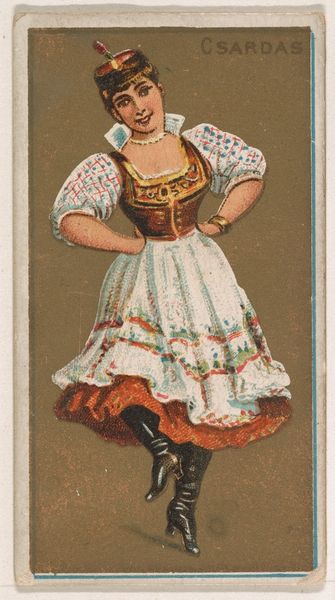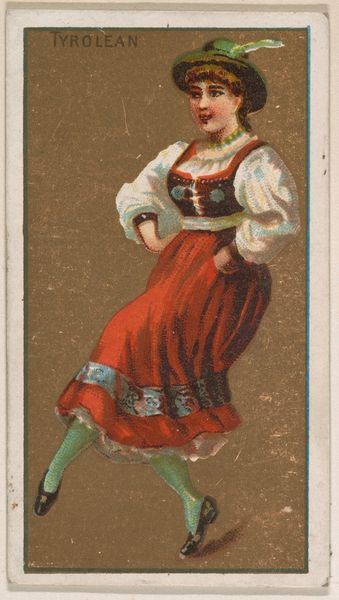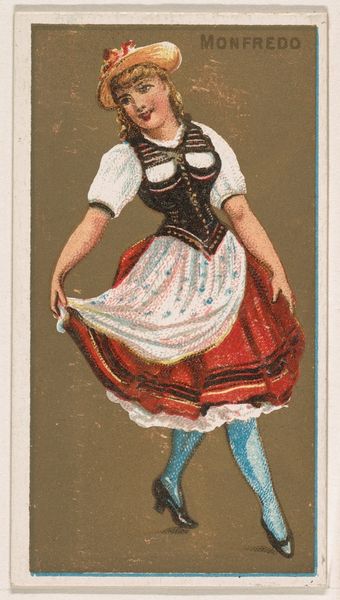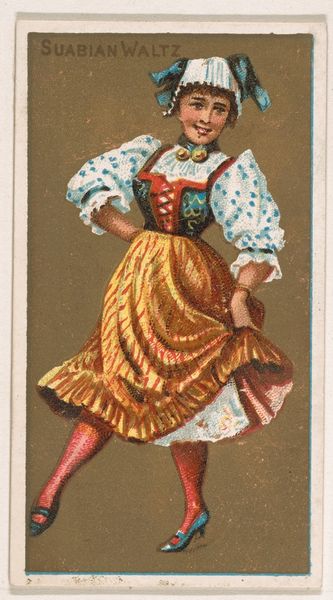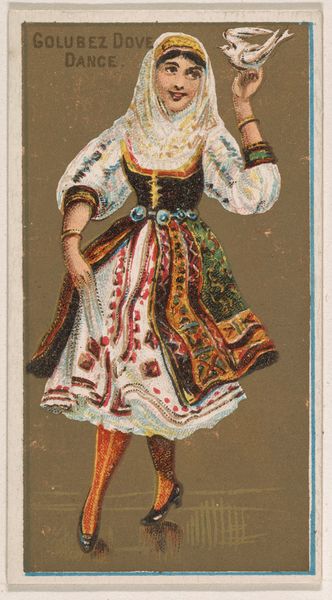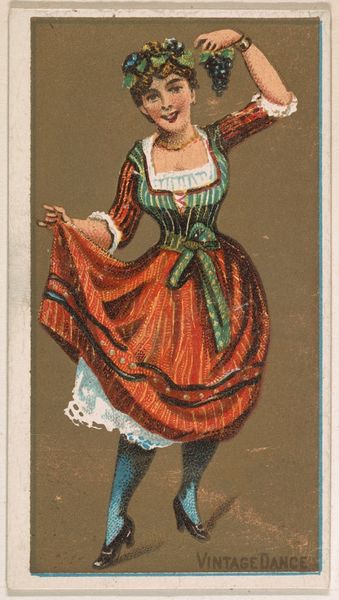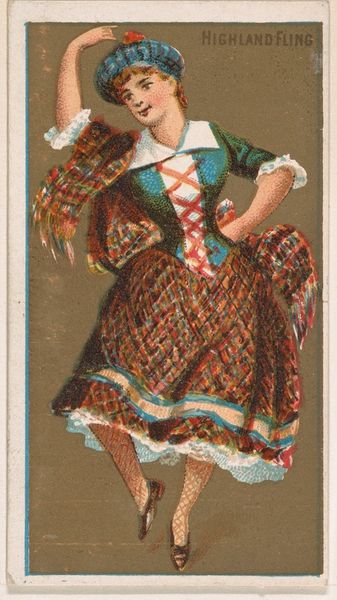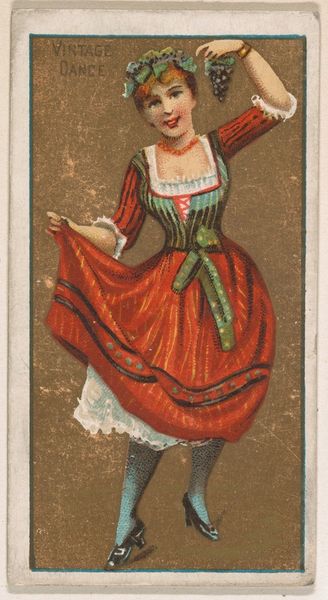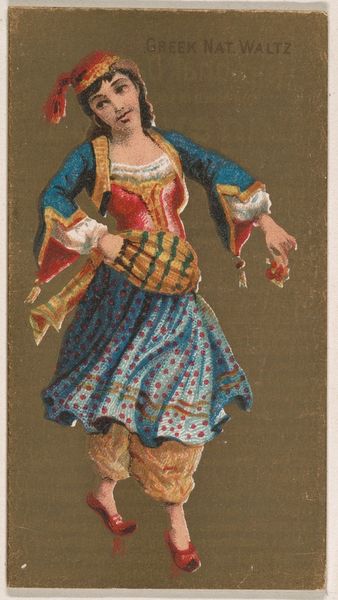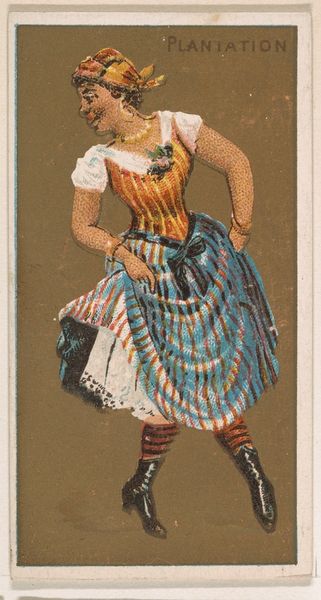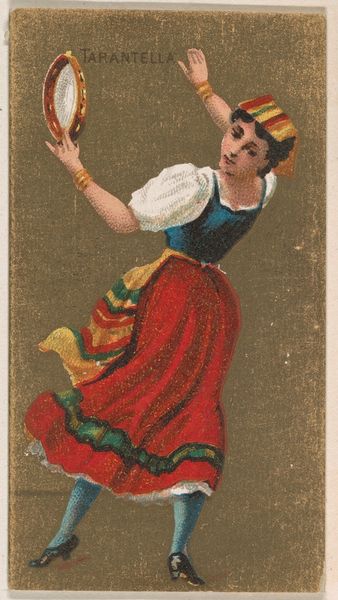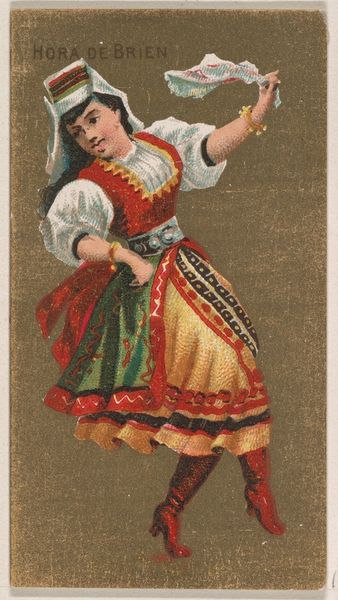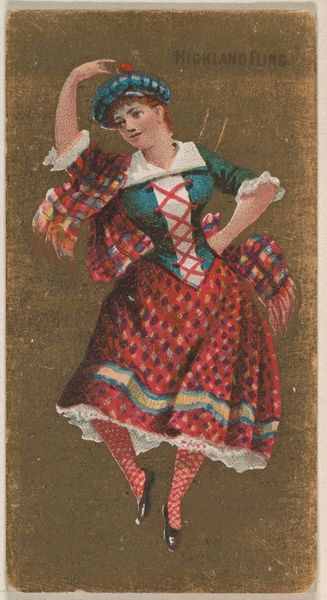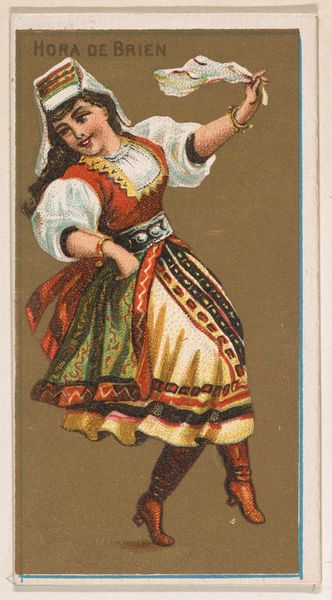
Csardas, from National Dances (N225, Type 1) issued by Kinney Bros. 1889
0:00
0:00
Dimensions: Sheet: 2 3/4 × 1 1/2 in. (7 × 3.8 cm)
Copyright: Public Domain
Curator: What an exuberant image! It radiates such youthful energy. Editor: Indeed. Let's delve into "Csardas," from the "National Dances" series, dating back to 1889 and created by Kinney Bros. Tobacco Company. It's currently housed at the Metropolitan Museum of Art. Curator: The composition strikes me immediately. Notice the sharp diagonal of the figure, almost bisecting the rectangular frame. The warm, muted background throws the figure into high relief and that stance… the flexed arm, cocked foot, and high heeled boots, its as though she is teasing the viewer with its playful energy! Editor: Absolutely. And observe the name, Csardas. That tells us a lot. The dance itself is Hungarian in origin. Given its rapid changes in tempo— from the slow Lassú to the frenetic Friss—it traditionally signified both a proud display of national identity and, in coded form, resistance to imperial powers. Curator: The costume itself seems almost assembled from disparate patterns. The close arrangement of shapes on her sleeves give an optical jolt next to the open apron! There’s also something deeply satisfying in the way the eye moves across the shapes. Editor: Her dress really tells a story about shifting cultural and social codes. This traditional garment becomes a visual representation of not just Hungarian national pride but perhaps an attempt to synthesize Eastern European folklore for a global audience via the proliferation of tobacco cards. It’s an exotic dance, after all, meant to captivate consumers. Curator: So, it becomes more than mere representation. The visual order structures not just the dancers shape, but broader understandings of both commerce and display. A material, tactile object performing a similar action. Editor: Precisely. It’s an interplay of symbolic layering and an examination of self, shaped and reshaped by history. What starts out as a commercial design reveals a much more dynamic conversation about global encounter. Curator: It goes to show you, that by giving close consideration to design, one can unlock compelling historical insight. Editor: Agreed! What seemed a superficial gesture contains depths of symbolic encoding that continue to inspire even now.
Comments
No comments
Be the first to comment and join the conversation on the ultimate creative platform.
